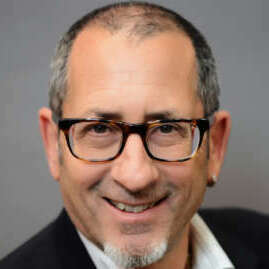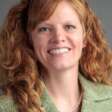Evolving biosurveillance in the post-pandemic era
We are very interested in whole genome sequencing, but in particular, building out the bioinformatics analysis that goes with it.
Dr. Katharine Jennings
Lead Scientist, Applied Science Research Center and Senior Manager, Life Sciences Team, Noblis
Evolving biosurveillance in the post-pandemic era
We're trying to push the envelope and really innovate the tools that people will need to handle these large data sets, and find those actionable insights. We call it lab to mission.
Dr. Katharine Jennings
Lead Scientist, Applied Science Research Center and Senior Manager, Life Sciences Team, Noblis
Every catastrophe the government deals with produces valuable lessons learned. The COVID pandemic was a case in point. Among the learnings: biosurveillance and bio hazard detection have entered a new phase, transformed by big data and data analytics. In effect, bio surveillance has become an information technology.
Dr. Katharine Jennings is the lead scientist at Noblis’s Applied Science Research Center, and senior manager for the company’s Life Sciences team. She focuses on molecular-based biosurveillance, and she’s been actively involved in building the bridge from surveillance science to IT.
“We’re particularly focused on whole genome sequencing and bioinformatics analysis that goes with that,” Jennings said. Specifically, her team started monitoring a type of diagnostic test used to confirm COVID infections. It’s a mature technique called the polymerase chain reaction (PCR) to, in effect, amplify the instances of a pathogen in a given human sample. A few reaction cycles can raise the number from single digits to billions.
Why does this matter?
“We want to be able to amplify the disease-causing agents so we can detect them, and we can say, ‘this person has, for example, a SARS-COV-2 virus infection versus something else,’ and we can detect what’s causing them to be sick. It’s a very rapid method. This has really revolutionized disease detection in a lot of ways because it is sensitive, specific and rapid.”
“On a larger scale, the challenge for biosurveillance teams is mutations. Subtle changes in the virus might cause failure of the PCR assays,” Jennings said. “And then we, meaning the medical community, might lose the ability to detect that infection in someone,” she said.
Noblis developed a methodology Jennings described as using an entire genome, or whole genome sequence, to monitor for what she called signature erosion. Understanding the changes that occur in a virus lets operators keep the PCR diagnostics “fresh and as up to speed with the virus changes as possible.” Noblis in fact co-authored a paper with the Defense Biological Product Assurance Office detailing how they used whole genome sequences, their bioinformatics solutions and performance monitoring of more than 40 PCR diagnostic assays to help organizations such as the Centers for Disease Control and Prevention find and identify eroding PCR assays sooner than otherwise.
In fact, Jennings added, Noblis is currently working on how to apply the PCR and whole genome sequencing to the emergent strains of monkey pox.
Big virus, big data
Surveillance, especially surveillance informed by whole genome sequencing and revved by the ability to keep up with mutations, produces ever larger sets of data. This is what merges biosurveillance with IT.
“We are very interested in whole genome sequencing, but in particular, building out the bioinformatics analysis that goes with it,” Jennings said. “This is something we’ve seen during the COVID pandemic: There is a need to build out those informatics tools, and also to automate them to make them easier to use, and more informative in terms of interpreting what the data look like.”
Jennings said the informatics component of biosurveillance is a Noblis value add to the national process. It’s especially important as biology becomes, as she put it, “data dense.”
“We spend a lot of time not only ingesting the raw sequence data,” Jennings said, “but also making those bioinformatics algorithms and visualization tools then trying to make them easier to use. Ultimately, we want to make bio surveillance more accessible to more populations, to push it out to the field for animal surveillance and environmental surveillance and health care workers.”
The technology set is useful not only for coronaviruses, but equally to a wide range of zoonotic infections that spread from animals to people.
Through another study, Jennings said Noblis has also applied whole genome sequencing and bioinformatics to COVID clinical samples. Her team identified a small group of individuals with so-called breakthrough cases of COVID infection, those occurring after vaccinations and possibly boosters.
“We were able to determine that this cohort had a constellation of mutations that hadn’t been seen before,” Jennings said. That wasn’t proof the mutations had caused the infection, she said, but it did “highlight some areas for future study to better understand the biology, both the virus and the changes, and how vaccination may be putting pressure on the virus in these populations and contributing to changes over time.”
Moreover, Jennings said, “The work points to the need for a state of continuing surveillance to produce a constant increase in learning – about viruses, mutations and the effects of vaccines. That would require an investment in surveillance and information processing infrastructures to support efforts that are more ongoing operations than reactive episodes.”
“We really need a more robust infrastructure,” Jennings said. “We need coordination at a grander scale. We need continuous funding at a greater level, both for the vaccine and medical countermeasure development [and] for the detection and maintenance of public health.”
Copyright
© 2024 Federal News Network. All rights reserved. This website is not intended for users located within the European Economic Area.








